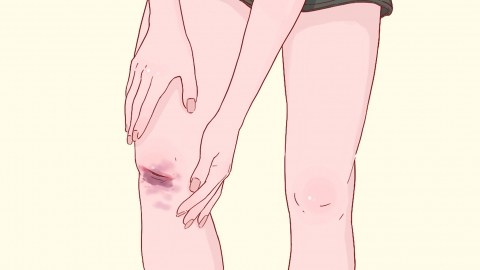Under what circumstances can one generally get tetanus?
Generally, tetanus infection often occurs when a wound is contaminated by *Clostridium tetani* bacteria. It commonly arises in deep and narrow wounds, contaminated wounds, animal bites, open fractures, burns, and similar situations. Specific analysis is as follows:

1. Deep and narrow wounds: Punctures caused by sharp objects such as nails, needles, or splinters create wounds that are deep with small openings, easily forming an anaerobic (low-oxygen) environment. Since *Clostridium tetani* is an anaerobic bacterium, it can readily multiply and produce toxins under such conditions, leading to tetanus.
2. Contaminated wounds: Wounds exposed to dirt, rust, feces, or sewage may carry *Clostridium tetani*. The bacteria can enter the body through the wound and rapidly multiply under favorable conditions, increasing the risk of developing tetanus.
3. Animal bites: Bites from animals such as dogs, cats, or rodents can introduce *Clostridium tetani* present in the animal's mouth into the wound. These wounds are often deep and contaminated, allowing bacteria to enter the body. If not properly treated promptly, they may trigger tetanus.
4. Open fractures: When a fracture breaks through the skin, creating an open wound, the exposed bone and tissue are vulnerable to contamination from external sources. Additionally, severe tissue damage at the fracture site may create localized anaerobic conditions, providing an ideal environment for *Clostridium tetani* growth and increasing the likelihood of tetanus.
5. Burns: Moderate to severe burns cause extensive skin damage, resulting in deep wounds that are prone to bacterial contamination. Moreover, post-burn tissue may suffer from ischemia and hypoxia, creating favorable conditions for *Clostridium tetani* proliferation, potentially leading to tetanus.
In daily life, if any of the above types of wounds occur, prompt and thorough wound cleaning and disinfection are essential. Tetanus vaccination or administration of tetanus antitoxin should be considered when necessary to reduce the risk of tetanus. Additionally, maintaining wound cleanliness and dryness helps promote healing.





